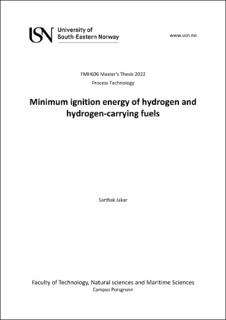| dc.description.abstract | Hydrogen is touted to be the fuel of the future leading to low carbon emissions globally. But as this fuel is being popularized all over the world for all the industry sectors, very little is known about the combustion properties of hydrogen and its mixtures even though there has been a lot of research has been going on. Knowledge of its combustion properties will surely help in transportation, storage, and usage in different sectors. Therefore, the focus of this work is to determine the spark energy of the hydrogen-air mixture using a 20-liter explosion sphere ignition setup. The fuel mixture will be filled in the explosion sphere and the mixture will be ignited using a spark capacitance circuit by changing the capacitor as per the requirement for more energy. The data generated during the spark ignition is recorded on an oscilloscope and the visualization is done through Kirana, a high-speed camera that records the ignition inside the explosion sphere. Four experiments were performed under the 22_SJa_P01 and a total of 71 experiments under the 22_SJa_P02 project. The recorded data was then processed in MATLAB for which codes were developed to produce the plots for further analysis. | |
